Pantry shelving sizes
Read This Before You Put in a Pantry
85 percent of home buyers considered a kitchen pantry “essential” or “desirable,” the National Association of Home Builders reports. In existing homes, there’s a clear drive to add and improve pantries, ranging from walk-in pantries to improvised solutions like open pantry shelving along basement stairs.
Pantries typically hold groceries, but no one says you can’t squeeze in a few platters, small appliances, and baskets to hold linens, paper goods, and cleaning supplies. Go ahead: Add the dog bowl too.
Organize Your Space with Kitchen Pantry Shelving
Shown: This compact, well-lighted place has many of the features found in larger pantries, including sturdy shelves, the bottom ones topped by a useful work surface and finished with a face frame and baseboard-style trim. Paneled, windowed doors and stone-like flooring offer function while also giving the pantry an inviting look and integrating it with the surrounding space.What’s key is a pleasing sense of order—another way of saying that even the tallest pantries need a place for everything and everything in its place. Read on for the details, whether you are building from scratch or reworking what you have.
Take Stock of What You Store in Your Pantry
Groceries
To start, figure out what you want to stash—or plug in—right there, whether it’s a lifetime supply of vanilla, a blender, cookbooks, your grandmother’s soup tureen, a folding ladder, or fondue forks you unearth once a year. Don’t wait until the shelves and niches are in—plan for your inventory and any outlets first.
Extra Cookware
Turn the top shelf into a colorful display of occasional-use pots and pans.
Countertop Appliances
Pull forward the ones you forgot you had. (Like you, Mr. Pasta Machine.)
Big Items
Got a step stool, an ice-cream maker, enough kibble to feed a kennel?
Select the Ideal Placement for Your Pantry Shelving
Michelle DrewesThe ideal spot is cool, dry, and convenient.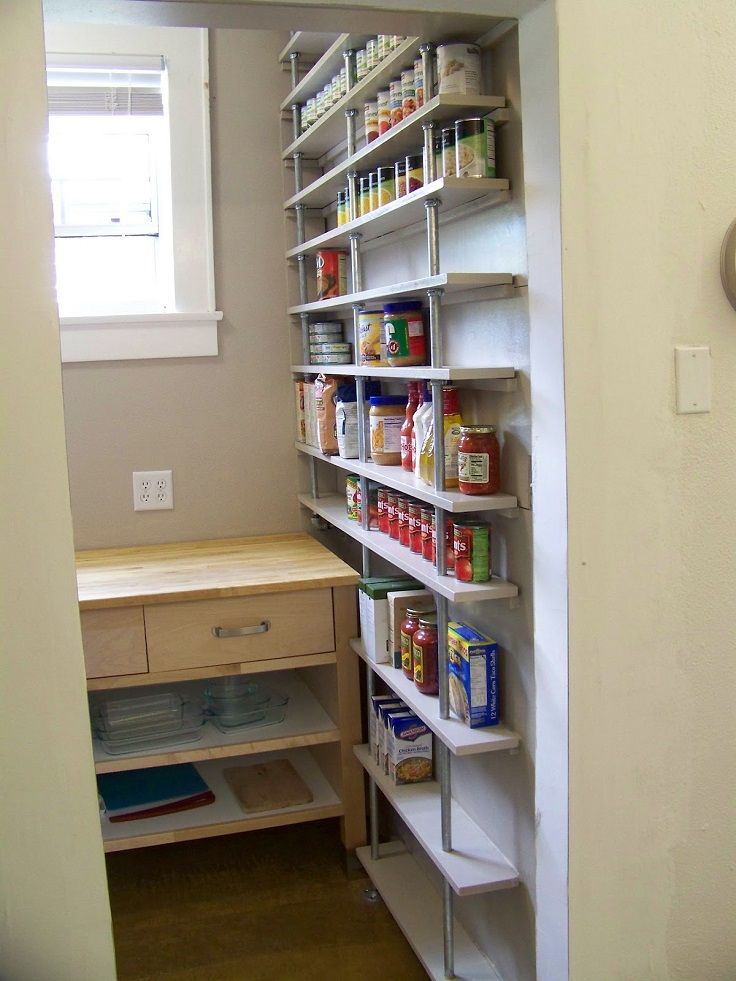 A gut reno offers the most options, but it’s not the only way to go.
A gut reno offers the most options, but it’s not the only way to go.
Annex Space
Instead of taking down an interior wall to, say, open up the kitchen to the dining room, consider moving that wall to create space for a pantry on the kitchen side.
Tap a Recess
Pantry shelves can be added to a wall near prep space or can even fit between studs.
RepurposeIf you aren’t getting a lot of use out of a coat or broom closet, picture it as a pantry. There’s no law against setting aside a spot in it for the dustpan, too.
Bump OutColonial pantries were often unheated, shed-like lean-tos. Today’s equivalent is a one-story rear addition that could include a half bath or mudroom.
Look Down
If you have a cool, dry basement, pop in a freestanding unit; sturdy, open wire shelves hold everything and are easy to access. Or hang boxed open shelves along the stairs—the steps will be a built-in ladder.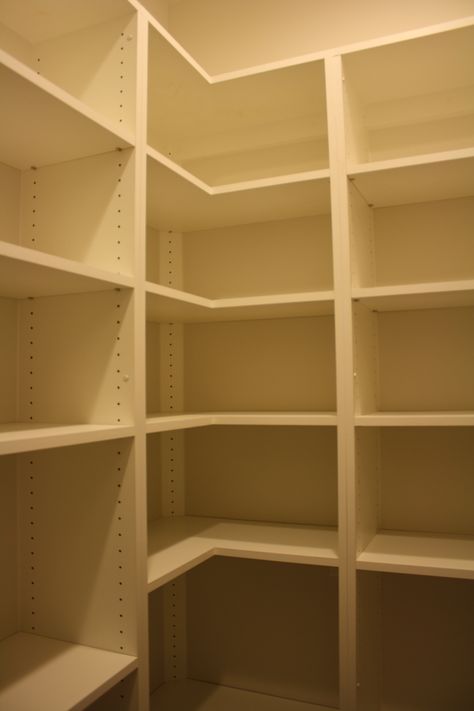
Consider Your Shelving Options
Laura MossSize and Depth for a Walk-In Pantry and Adjustable Pantry Shelves
Typically about 5 by 5 feet, walk-ins can be lined with U-shaped open shelves or cabinets and finished with or without a countertop.
Adjustable shelves offer flexibility. Start with bottom shelves 16 to 18 inches deep and spaced about 18 to 24 inches apart, for bulky items; make shelves at eye level 12 to 14 inches deep and spaced 14 to 16 inches apart to fit cereal boxes and canisters. Shelves for spices and cans may need no more than 6 inches front to back. When planning for any item, add 2 inches of vertical space so you can tip or slide it in and out easily.
Tips for Selection or Building Your Pantry Shelves- Plywood is the go-to material for shelves—edges can be finished with iron-on veneer banding or wood trim—but other materials can work, too (if you’re careful; see below).
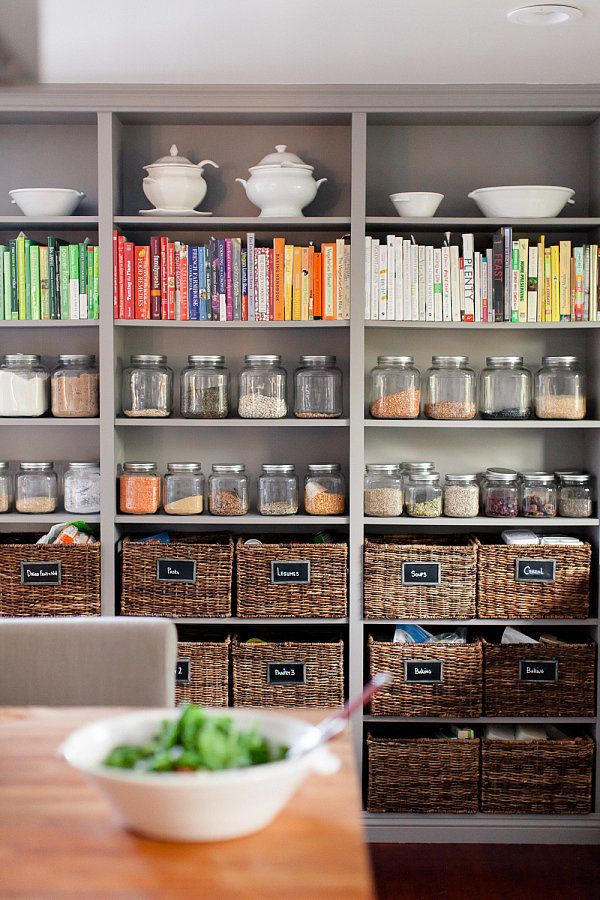
- If you hate looking at stuff, install cabinets. If dust is the issue, not clutter, opt for uppers with traditional glass fronts.
- Avoid door jams by paying careful attention to where doors swing, whether it’s on a cupboard inside the pantry or leading to the pantry itself. Some pantries omit doors altogether.
- Light it up with a ceiling fixture—a pendant can be pretty—or rechargeable puck lights with motion sensors.
- Avoid hide-and-seek by storing smaller items on organizers like lazy Susans and tiered shelf inserts.
- Keep it cool and dry, ideally below 70°F and 45 percent humidity. No AC? Plug in a small dehumidifier. No outlet? Try a moisture-absorber like those made by Arm & Hammer.
TIP: Think about adding outlets behind shelved small appliances, including a microwave.
Make Sure There is Enough Space Between Shelves
Before choosing a material for the shelves (3⁄4-inch plywood, half-inch MDF…), search “Sagulator” online to figure out how far the shelf can span before bowing under the weight of books and canned goods.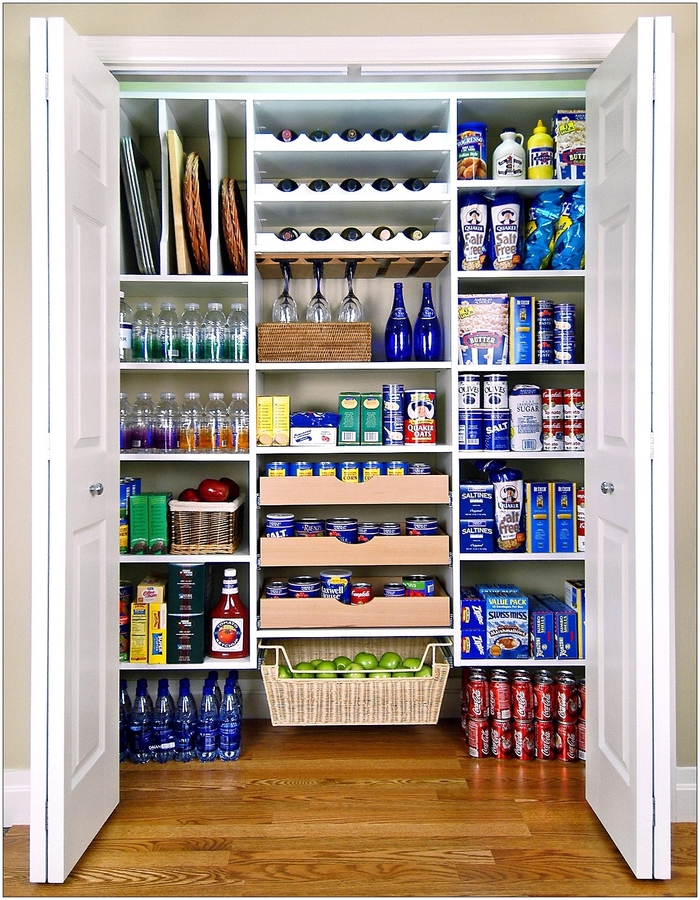
Reach-In
Courtesy Starmark CabinetryTypically about 5 feet wide and 2 feet deep, reach-ins can also be as shallow as 16 inches, making them a natural fit along a wall with a recess or soffit. The reach-in at left was customized with paneled sliding doors and enough vertical space to stash a trash can during parties.
Decide How Big Your Pantry Should Be- Maximize floor space by opting for pocket or sliding doors. Keep in mind that they can be heavy and require maneuvering to get full access. Doors that swing out ease access; just make sure they don’t block traffic if left open. Doors can be omitted, of course, but they do hide things.
- Accommodate oversize items by letting them sit on the floor, no bottom shelf needed.
- Measure and allocate space to meet your needs—extra head space for tall canisters, for example. Create cubbies, maybe one for trays and platters, another for a baking or coffee station.
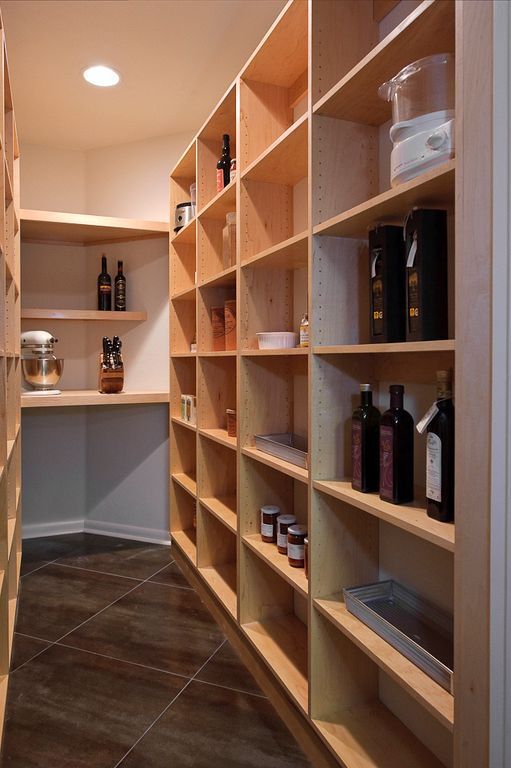 (You remembered the outlets, right?)
(You remembered the outlets, right?) - Unify the pantry and adjacent space with coordinated finishes, especially when omitting doors.
TIP: Doors that slide or fold are prone to wobbling and sticking, so don’t skimp on the track hardware.
Wall-To-Wall Pantry with Sliding Barn Doors
Sliding barn doors with exposed hardware, as shown, double as a focal point.Brian Vanden BrinkIf you have a windowless wall in the kitchen or a nearby hall or mudroom, consider building in shelves with or without doors. Open shelves offer the convenience of being able to quickly grab what you need, but they can also be a magnet for clutter and dust.
Wall-To-Wall Pantry with Open Shelves
Brianne WilliamsOpen shelves are typically a uniform depth. Pro organizers favor shelves no deeper than 14 inches to keep everything front and center.
Group like items so you don’t have to scan the entire wall or move doors looking for the pretzels.
Use baskets and ceramics (shown) to create a nice shelfscape.
Pantry Cabinet Options: “Batwing”
Courtesy Lewis Alderson & Co.To answer the call for pantry-style storage, cabinetmakers now offer options that blend in with the rest of the kitchen storage, from simple upgrades like a tall pullout to full-blown built-ins with hutch-like appeal.
TIP: Before lining cabinet doors with extra shelves, make sure there’s room inside for the doors to close.
“Batwing” pantry cabinets mirror French-door refrigerators, with restricted door swings and bottom-mount drawers. Custom models, like the one shown above, allow quick access to essentials, while drawers hide other stuff.
Pantry Cabinet Options: Narrow Slide-Outs
Andrea RuggNarrow slide-outs, (pictured), are open on both sides and make use of awkward space; Rev-A-Shelf makes a retrofit just 3 inches wide.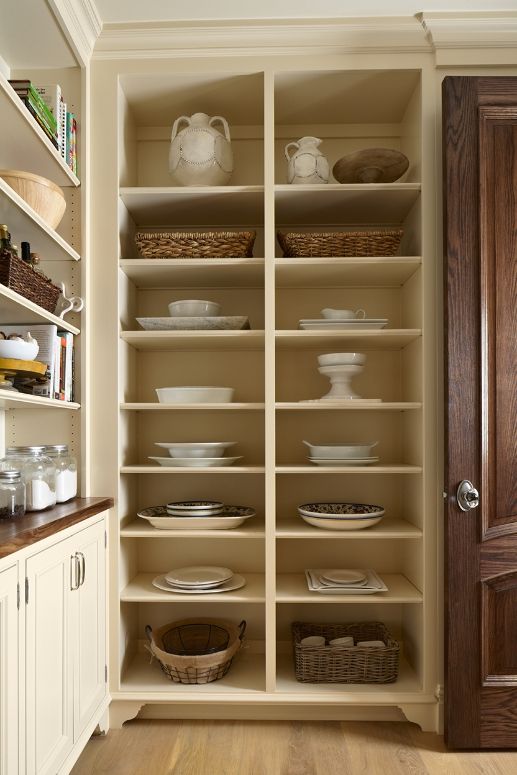 Try before buying: Heavy-duty hardware is a must.
Try before buying: Heavy-duty hardware is a must.
Cabinet upgrades include wooden rollout trays that come in different widths and depths and can be installed at varying heights, depending on what you want to store. Again,it’s worth paying extra for heavy-duty glides. They should operate smoothly under a weighty load.
Found Spaces: Tucked Under Stairs
Gina BiancanielloOlder houses aren’t famous for their surplus closets and rooms, but they do have nooks and crannies that can be converted into pantries or colonized by freestanding furniture.
Tucked under the stairs, this hideaway makes creative use of former dead space, complete with push-latch doors that blend with the paneled wall, shallow built-in shelves, lighting, and a baking cart that rolls right into the kitchen.
Found Spaces: Freestanding Kitchen Pantry Cabinet
Gridley + GravesFreestanding storage like this unpainted vintage hutch can add warmth as well as function.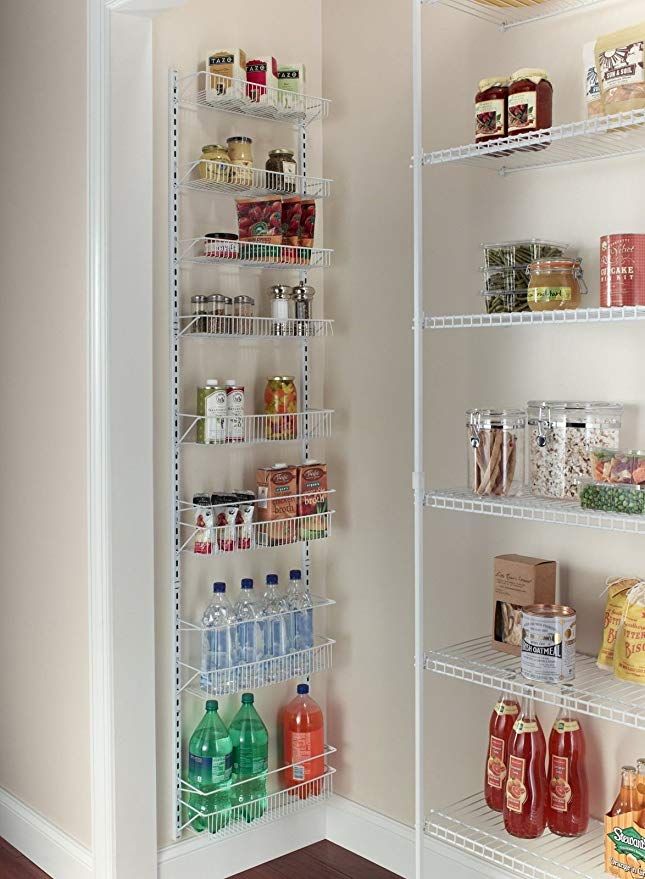 Look for strong shelves that keep everyday items easy to see and reach.
Look for strong shelves that keep everyday items easy to see and reach.
Safe Pantry Storage
Store your goods in containers suited to their contents. From left: Woven baskets with handles, like these Sedona totes, are ideal for linens and come lidded or not; from $25, Crate & Barrel.
BPA-free, dishwasher-safe Brilliance containers make rapid-turnover items like cereal and pasta easy to see; from $4.99, Rubbermaid.
Stoneware canisters with tight-fitting, gasket-equipped lids protect whole spices like cinnamon sticks and bay leaves from light and premature aging; from $25, Le Creuset.
Erasable food labels (not shown) can post purchase dates; $6.50, Jokari.
It’s Not a Morgue
Always a good idea to check an item’s shelf life, available online, or you may risk SES (sudden expiration syndrome).
- Olive oil is vulnerable to heat, light, oxygen—and time.
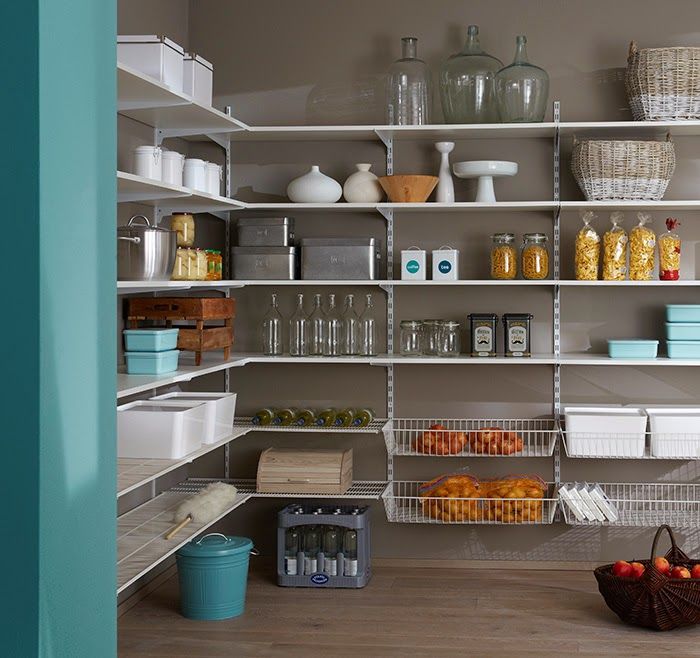 Open it within six months, then store it in the fridge.
Open it within six months, then store it in the fridge. - Whole grains-—brown rice, popcorn-, oatmeal—and flours can get stale in months. Think about refrigerating or vacuum-packing them (Foodsaver) once open.
- Nuts can also turn rancid—pine nuts after only a month, pecans after four. Hoarders should stash them in the freezer.
- Ground spices fade fast. Freezing can cause condensation; keep them in the pantry, but replace them once or twice a year.
Make It Special: Throw a Curve
Ellen McDermottYes, it’s a hardworking space where function trumps frills. But that doesn’t mean your pantry shouldn’t strut some style. Here, three colorful upgrades to consider.
THROW A CURVE. Rounded shelves eliminate sharp corners; shallow ones for spices and condiments can be made with perforated aluminum (McNichols).
Make It Special: Hang a Decorative Door
Tria GiovanHelp define the space while offering glimpses inside with a salvaged screen door or a reproduction like this (Vintage Doors).
Make It Special: Trim It Out
Corey GafferEvoke period lace shelf edging with easy-to-paint MDF Victorian Running Trim (Victorian Woodshop) and add wood brackets (Vintage Woodworks).
Design: Martha O’Hara Interiors
Thanks to: The Kennebec Company, Bath, ME; Catherine Seiberling Pond; Kathy Marshall; Scott Davis, Closet Maid; Tori Cohen.
Perfect Pantry Shelf Depth and Height
This post may contain affiliate links, which means if you click on a link and purchase an item, EverythingPantry.com may earn a small commission at no additional cost to you. Read our affiliate disclaimer here. This support helps us to continue to write with integrity, and maintain a high-quality website.
Good day, pantry enthusiasts! Are you evaluating your food storage space right now, trying to make space decisions? Let's see if we can help. Below are the averages to keep in mind when working with pantry shelving spacing.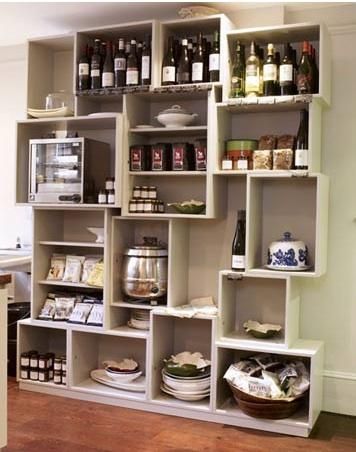
- standard pantry shelves come in depths of 12" and 16" deep
- an average spacing of shelves for most food items is 7"-10" and 12"-14"
To lay out pantry shelves, plan on a mix of 12" and 16" deep shelves. Heavy and bulkier items gravitate to the lower shelves of the pantry. Place frequently used items at eye level and lighter objects like baskets on top shelves. Most food boxes are not more than 10" deep; standard cans are within 3"-4" wide and can be stacked 3-4 deep on a shelf.
are
For comprehensive charts of pantry shelf depths and spacing, read on.
RELATED ARTICLES
- Tips for Buying Pantry Shelves
- Plan a Pantry Shelf: Food Size Charts
Where to start your pantry shelving spacing adventure
If you need shelves, and have chosen a closet kit, you don't have too many decisions to make. When choosing a package, the measurements have been decided for you. The depth of the shelves will likely be the standard 12" depth with some 16" depths thrown in for bigger items.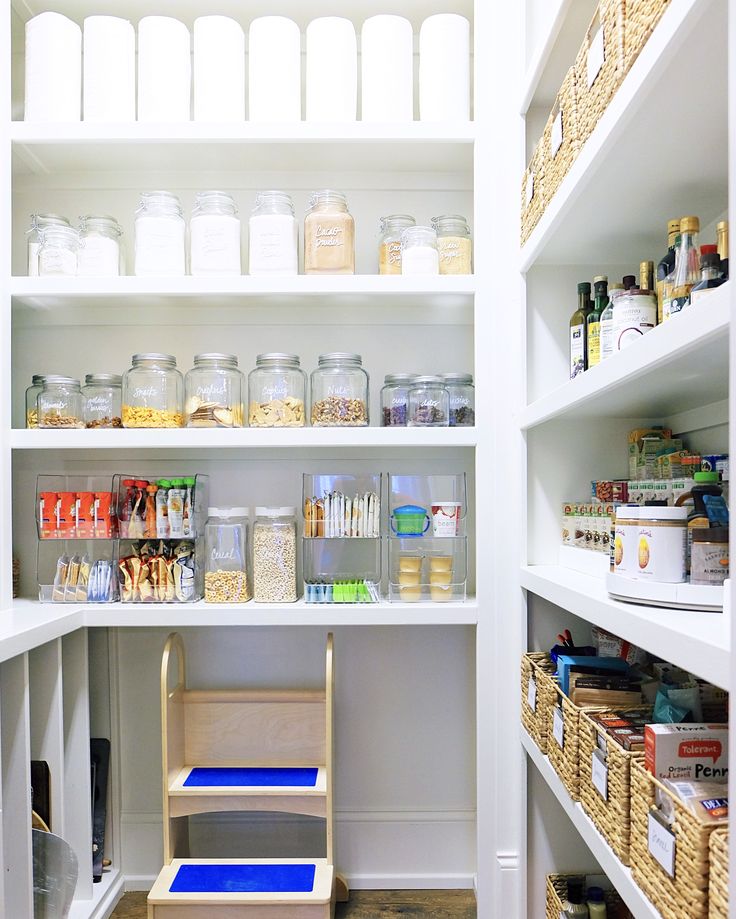
If you are at the point of doing this all from scratch, there are a lot of decisions to make. If you want some easy information right now, head over to find out about my "Pantry Shelf Planning Bundle" that helps make shelf decision making easier. if you want Customization is a beautiful thing, but it can be a double-edged sword, bringing more choices than you ever imagined.
One of our Iowa pantry tours "A Visit to a Modern, Old-fashioned Pantry" demonstrates this. The pantry is a fine example of custom pantry shelving of different depths that transition beautifully. Great care and thought were taken and it shows.
This article focuses on ideal pantry shelving spacing from a practical viewpoint (I will leave the fancy carpentry work to the experts!) The reality is, the food in our pantry comes in all shapes and sizes. The best we can do is find the averages and keep making adjustments until we find what works for our own situation.
The reality of food item size management in pantries.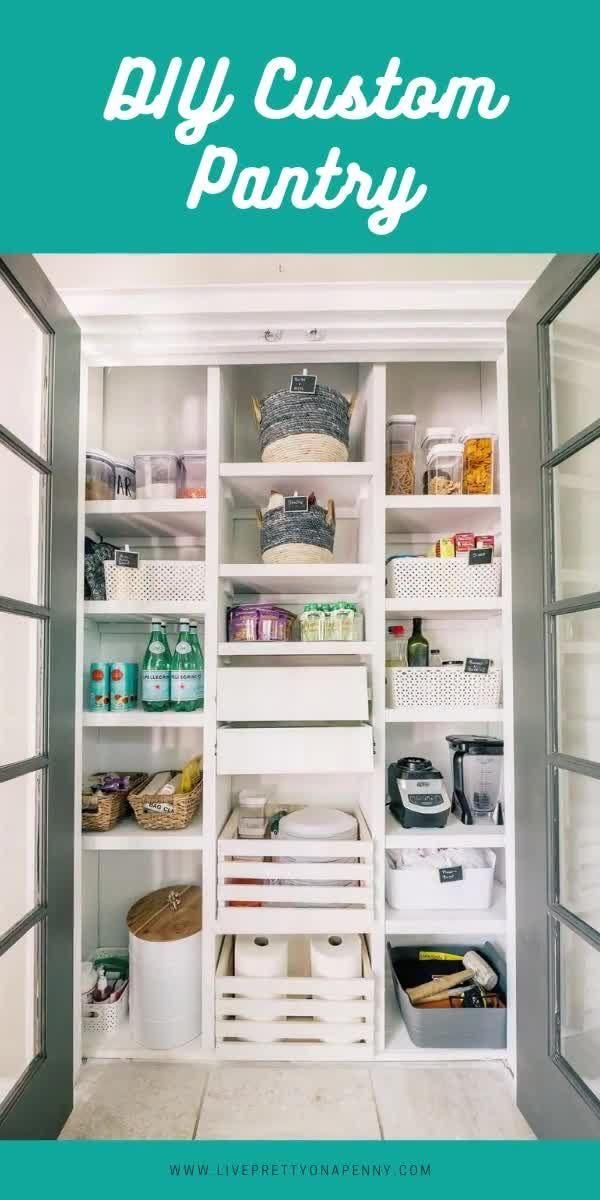
Tribute to small pantry shelving
I love shallow shelves. They can be tucked in almost anywhere - behind a door, on a special wall, or a featured custom shelf. Finding anything back is an enjoyable experience - no hidden or forgotten items. Here is the low-down on narrow pantry shelving:
- a shelf of 4 inches wide, and not more than 7" will conveniently hold small bottles such as spices, flavoring extracts, baking powder, gelatin and pudding boxes, etc.
- shelves the depth of just one can – 3 1/2" to 5" – will still be useful; a depth of 6-8" allows for one or two rows depending on can depth.
In one of my houses, leftover door trim was used for shallow shelves. The "one row shelf rule" is an admirable goal, but may not always be possible. The idea of one row shelving is to aim for shelf depths narrow enough for one row of cans for visibility and easy retrieval.
For maximum storage, most houses opt for at least 12" deep shelves - they are the standard. This won't stop you from adding over-the-door storage, installing narrow shelves on empty walls (especially where the door opens) or tucking spice shelf racks in where opportunity calls.
This won't stop you from adding over-the-door storage, installing narrow shelves on empty walls (especially where the door opens) or tucking spice shelf racks in where opportunity calls.
Single item storage on narrow pantry shelf/racks.
Standard pantry shelving widths
Very few food items are more than ten inches across. Start by looking over your food items and take a quick "poll" - measure a few cans, jars, and boxes to quickly discover width and height averages. This provides the information you need to plan on best dimensions.
Below are suggested shelf depths for certain food items. Shelves, spacing, and diagrams are all found in my "Pantry Shelf Planning Bundle" that helps make shelf decision making easier. Some of these are not standard shelf depths to buy in a store, this is if you are customizing a pantry and cutting boards to fit. It is still helpful to everyone, nonetheless. If you are curious about space between shelves, jump to Golden rules of pantry shelf spacing.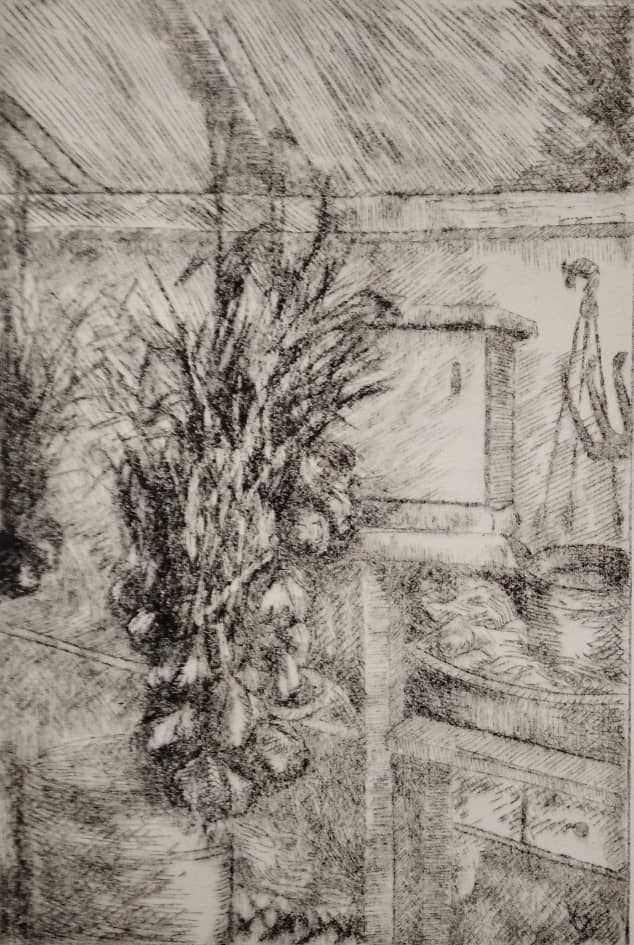
SHELF DEPTHS
4 inches
Spices, gelatin boxes, small bottles, cans 1-deep
Location: empty wall behind door, storage on door, "rack"
Most single cans are about 3.5" wide. Achieves ONE ROW SHELF RULE. For best results, design shelves only wide enough to hold comfortably one row of supplies.
6-8 inches
Canned goods, 2-deep
Large jars, bottles, or cake mix 1 deep with room to spare
Assorted mixed condiment bottles, 2 deep
Cracker boxes.
Location: eye level or higher
10 inches
Canned goods, 3-deep
Large peanut butter or mayonnaise jar, 2 deep
Assorted mixed condiment bottles, 3 deep
Medium-size cereal boxes
Location: eye level or higher
Very few food items are more that 10" deep, but 12" deep shelving is the standard.
12 inches
Canned goods, 4-deep
Jumbo-size cereal boxes, flour, bins
Large peanut butter or mayonnaise jar, 2 deep
Assorted mixed condiment bottles, 4 deep
Location: eye level or higher
MOST COMMON DEPTH. Accommodates a wide range of food items.
WARNING!Shelves start entering the
"DEEP ZONE"
14-16 inches
Plates, platters, pots and pans, pantry organizers such as can organizers, turntables and bins of produce, small appliances.
Location: eye level or lower
18-20 inches
Medium-size small appliances and bulky items like crock pot, roaster, etc.
Location: bottom shelf
20+ inches
Bulk food, jumbo bins or use "layering" techniques for mixed items.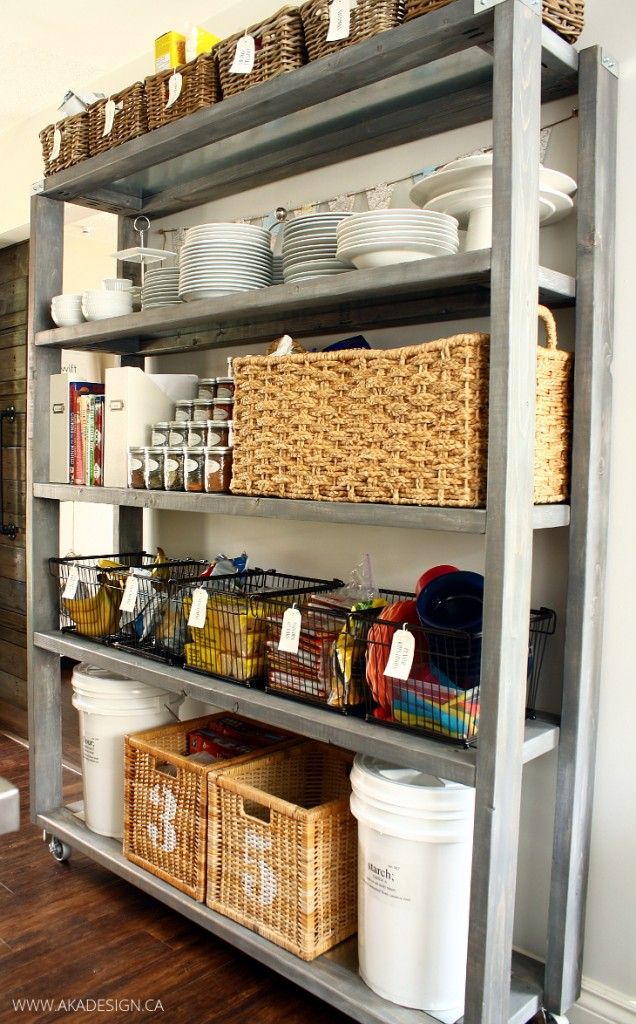
Location: bottom shelf
Golden rules of pantry shelving spacing
- The area of comfortable reach is between one and six feet from the floor.
- Narrow shelves should be at eye-level.
- Install medium width shelves above eye level and below waist level.
- Deeper shelves should be at waist level (especially if the shelf doubles as counter space).
- Store heavier items lower and lighter items higher.
- Graduate shelf depth from deepest on the bottom, to more narrow on top.
- Consider 12" deep shelves placed above 16"-20" deep shelves for easier access of the 12" shelf.
- If you find that stuff seems to get pushed to the back and forgotten about, you should consider more shallow shelves or buy organizers for deep pantry shelves.
PANTRY SHELF SPACING HEIGHT | FOOD ITEM EXAMPLES |
|---|---|
6" | General height of cans and spice jars is about 4 inches; allow 2 inch space for comfortable access. |
6.5"-7" | Most canned foods. |
7"-10" | A safe average distance for spacing. |
9"-12 1/2" | Mason jars (6.6"). Most baskets are 8" tall. Marinade bottles are 8.5 and large ketchup bottles are 9”. |
14"-16" | Cereal boxes average 12" in height (frequently accessed, so keep nearer to eye level). |
18" | Height of shelves above countertops in pantry. Allows for space of KitchenAid mixer, coffee maker, or other appliances. |
18"-24" | Large bins of food and big items that just don’t fit well elsewhere and bulky appliances (this corresponds with deeper shelf depth, such as 16"-18"). |
FLOOR TO BOTTOM SHELF (minimal) | Plan on 16″-18″ from floor to bottom of first shelf for bulk storage, pet food, heavier food like potatoes, small appliances. |
FLOOR TO BOTTOM SHELF (generous) | Big objects such as paper towels, pet food, jumbo bins, crates, bottled water, trash cans. |
Experienced pantry owners do this
Use these smart strategies to make for an enjoyable pantry experience:
- The shelves between waist and eye level are easiest to access, so put your most frequently used items there.
- Go with adjustable shelving for the most flexibility and spacing options.
- Use an interchangeable labeling system that can easily be changed as items are moved around.
- Allow for a 2-inch clearance above the tallest object on the shelf for easy removal and handling.
Decanting food allows control over food space
Decanting your food is the process of removing food from the package it was purchased in and putting it in another container.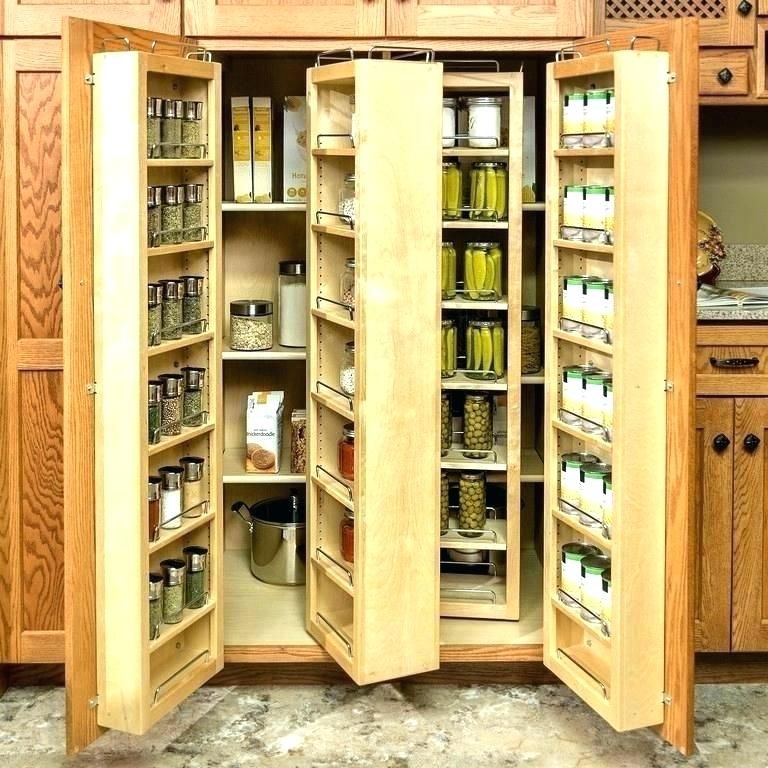 This action is usually taken to protect food from pantry pests and to preserve it longer in airtight containers.
This action is usually taken to protect food from pantry pests and to preserve it longer in airtight containers.
Instead of dealing with miscellaneous hodge-podge food box sizes, every container is consistent. Suddenly, size doesn't matter anymore. Compartmentalized storage is efficient and looks very organized on a pantry shelf. The cons are that there is an investment in the containers, and the extra time to decant the food and label it.
Decanting food into food storage containers offer greater control over pantry shelf organization.
Pantry needs change over time
Just when you thought you had the perfect pantry shelf system, your life changes. This is why adjustable shelving can adapt with the changing needs of a pantry.
Reasons why storage needs change over time:
- growing family, more buying in bulk
- larger cereal boxes for growing family
- "hiding" food or goodies from young children, placing on higher shelves or behind
- less family, cooking for 1-2 people, buying more pre-packaged convenience food
- packaging changes (Ritz crackers changed their box design to be more "pantry friendly")
In conclusion
Speaking for myself, finding the ideal pantry shelf settings is is very satisfying.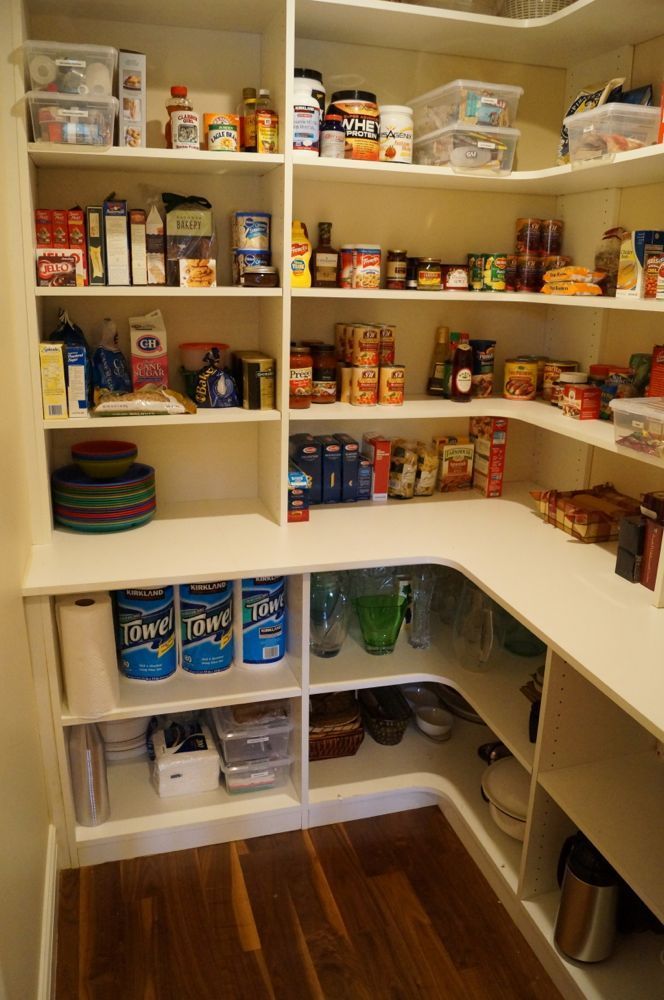 Adjustable shelving helps a great deal in making everything fit. If you are still struggling, give food storage containers a try. Never fear, you will triumph over your pantry shelving (and I will add, victory is sweet!).
Adjustable shelving helps a great deal in making everything fit. If you are still struggling, give food storage containers a try. Never fear, you will triumph over your pantry shelving (and I will add, victory is sweet!).
About the author
Renee Matt
Renee is an Iowa farmwife with a background as a former kitchen designer. Supporting the family farm with hearty meals has been key to Renee's pantry readiness. She uses her professional IT background and expertise to bring the Everything Pantry website to life. Read more about this farmwife on her about page.
Other articles you might likeShelving dimensions | Height, width, depth of the rack
At the moment, the production of the company ProfStellazh has mastered several designs with different overall dimensions and load capacity of the shelves. Often the buyer is faced with the question of which model to choose, how they differ and which model is most suitable for him.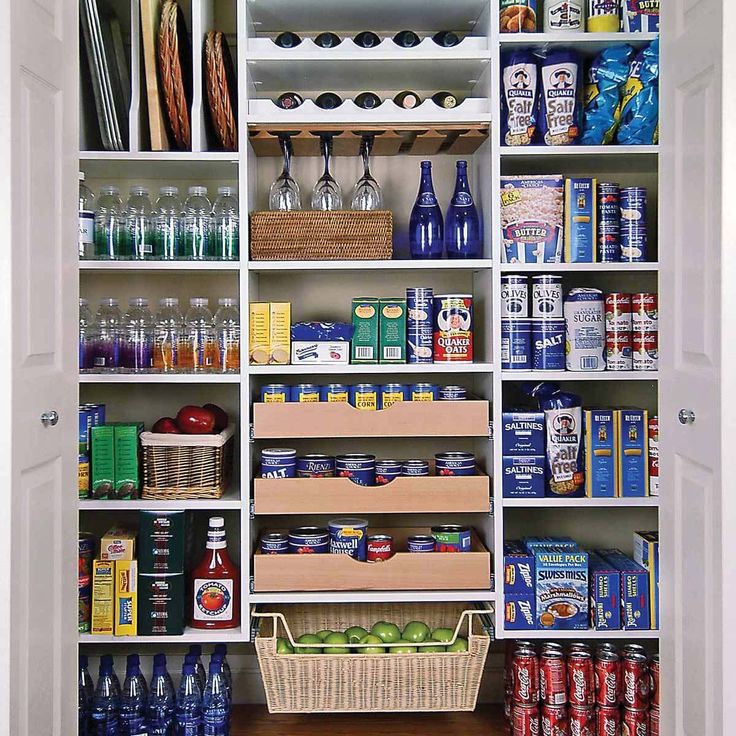 Distinctive features of each model are shelving dimensions (height, width, depth) and shelf load. Most models are universal and can be used both in office and utility rooms, and in warehouses.
Distinctive features of each model are shelving dimensions (height, width, depth) and shelf load. Most models are universal and can be used both in office and utility rooms, and in warehouses.
ST racks (up to 185 kg per shelf)
Collapsible versions of bolted models. Simple yet reliable connection. Suitable where frequent rearrangement of shelves is not required, and the load on the shelf up to 185 kg is more than enough. Most often used: in the household, as archival models in office premises. Available sizes are quite diverse for a wide range of tasks. Rack perforation allows you to install shelves on almost any shelving height .
This model allows you to install additional elements: side and rear stops, folder holders, back and side wall linings. Material - high-quality steel with a light gray polymer coating (RAL 7035). In addition, this design allows assembly in a line, ladder.
| ST series dimensions, mm | ||
| Height | Length | Depth |
| 1000; 1500; 1800; 2000; 2200; 2500; 3000; 3500* | 700; 1000; 1200; 1500 | 300; 400; 500; 600; 800** |
* - height 3500 is achieved by "joining" racks 2500 and 1000 mm
** - shelf 1500x800 is not available
STU racks (up to 200 kg per shelf) The carrying capacity of the shelf has been increased to 200 kg due to additional stiffening ribs. The shelves are attached to the racks using bolted connections, providing rigidity and stability of the structure. The STU model is painted with a similar powder paint according to RAL 7035. This design can be assembled both separately standing and in a line with a ladder (ledge). Structurally, they are a set of vertical racks and horizontal shelves. All necessary fasteners (including thrust bearings) are included in the rack package.
The shelves are attached to the racks using bolted connections, providing rigidity and stability of the structure. The STU model is painted with a similar powder paint according to RAL 7035. This design can be assembled both separately standing and in a line with a ladder (ledge). Structurally, they are a set of vertical racks and horizontal shelves. All necessary fasteners (including thrust bearings) are included in the rack package.
Most commonly used as a warehousing option. The model range is not so wide, because It is the bolted connection that makes the re-hanging of the shelves time-consuming, which is not always convenient for warehouse workers.
| STU series dimensions, mm | ||
| Height | Length | Depth |
| 1800; 2000; 2200; 2500 | 1000 | 300; 400; 500; 600; 800 |
SU racks (up to 150-300 kg per shelf)
Universal quick-assembly models.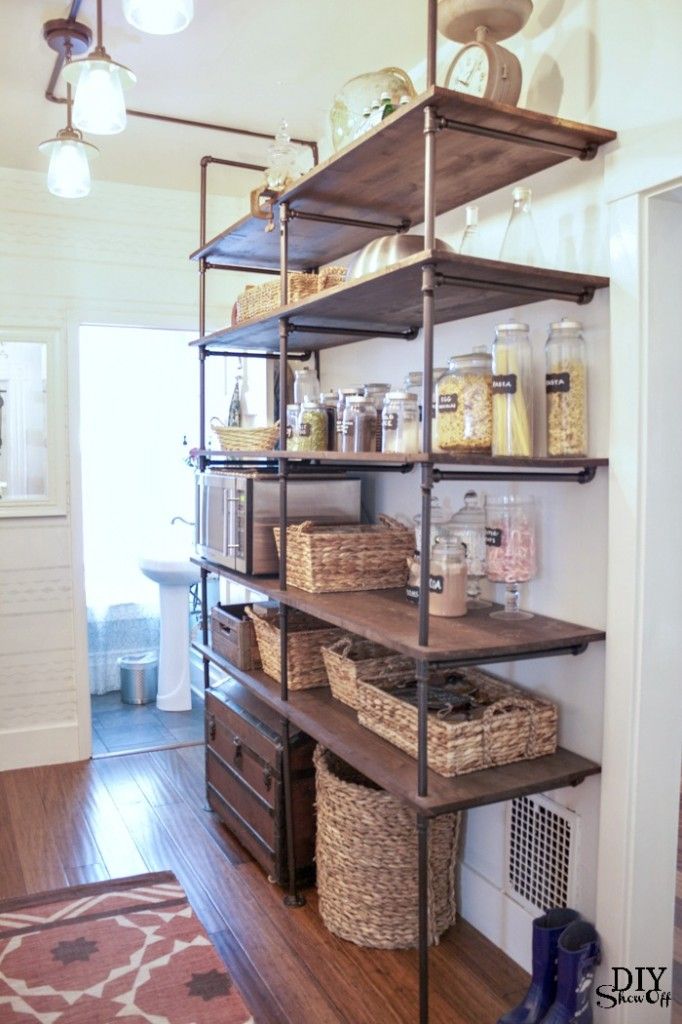 The main difference from the CT series is assembly without the use of tools - fast, simple and reliable. Fastening shelves on hooks, allows you to easily outweigh them along the height of the rack with a step of 45 mm. The load capacity of the shelves of 150 kg in the normal version and 300 kg in the reinforced version make this model a top seller. A wide range of sizes will satisfy a variety of tasks. Like most models, they are painted with a light gray polymer coating. Color according to RAL7035. This design allows you to assemble them in a line, ledge (ladder).
The main difference from the CT series is assembly without the use of tools - fast, simple and reliable. Fastening shelves on hooks, allows you to easily outweigh them along the height of the rack with a step of 45 mm. The load capacity of the shelves of 150 kg in the normal version and 300 kg in the reinforced version make this model a top seller. A wide range of sizes will satisfy a variety of tasks. Like most models, they are painted with a light gray polymer coating. Color according to RAL7035. This design allows you to assemble them in a line, ledge (ladder).
Stiffening cross included as standard for stability. If it is necessary to access the structure on both sides, crosses or half-crosses are installed instead of the stiffening cross. Additionally, they can be equipped with rods for clothes hangers, which allows using this model in wardrobes.
| SU series dimensions, mm | ||
| Height | Length | Depth |
| 2000; 2500; 3000; 3500; 4000 | 700; 1000; 1200; 1500 | 300; 400; 500; 600; 800 |
SK racks (up to 100-200 kg per shelf)
They are fully galvanized collapsible structures. Are intended for storage of goods of various weight and dimensions. The load capacity of the shelf in the usual version is 100 kg. On request, it can be increased to 300 kg or more. The load capacity of the section is 600 kg. When assembled in line, the load capacity is maintained. The installation height of the first shelf is not more than 500 mm from the floor.
Are intended for storage of goods of various weight and dimensions. The load capacity of the shelf in the usual version is 100 kg. On request, it can be increased to 300 kg or more. The load capacity of the section is 600 kg. When assembled in line, the load capacity is maintained. The installation height of the first shelf is not more than 500 mm from the floor.
Structurally, the rack of the SK series consists of vertical racks (frames) connected by a coupler to the required depth, horizontal shelves and a rigid crosspiece installed along the rear wall of the structure. All elements are made of galvanized metal, not subject to mechanical and corrosive influences.
The profile of the post allows the assembly of structures in a line, which saves on the final solution. The kit includes metal feet to prevent damage to the flooring and a plastic plug at the top of the uprights. Racks with shelves are attached using a hook-on connection.
| CK series dimensions, mm | ||
| Height | Length | Depth |
| 1050; 1500; 1800; 2050; 2300; 2500; 3000 | 700; 1000; 1250; 1500 | 300; 400; 500; 600; 800 |
SKU racks (up to 200-300 kg per shelf)
Reinforced version of the SK series model. The carrying capacity of the shelf has been increased to 300 kg due to additional stiffening ribs. The shelves are attached to the racks using hooks, which provide ease of assembly and rearrangement of the shelves. The assembly of this design can be done both separately and in a line, with a ladder (ledge).
The carrying capacity of the shelf has been increased to 300 kg due to additional stiffening ribs. The shelves are attached to the racks using hooks, which provide ease of assembly and rearrangement of the shelves. The assembly of this design can be done both separately and in a line, with a ladder (ledge).
Structurally, the rack of the SKU series consists of vertical racks (frames) connected by a coupler to the required depth, horizontal shelves and a rigid crosspiece installed along the rear wall of the structure. All elements are made of galvanized metal, not subject to mechanical and corrosive influences. All necessary fasteners (including thrust bearings) are included in the rack package.
| SKU series dimensions, mm | ||
| Height | Length | Depth |
| 2000; 2500; 3000; 3500; 4000* | 700; 1000; 1200; 1500 | 300; 400; 500; 600; 800 |
* - it is possible to manufacture heights over 4000 to 7000 mm under the order High load capacity, reliable fastening of shelves and ease of rearrangement - these are the main advantages of warehouse models MK.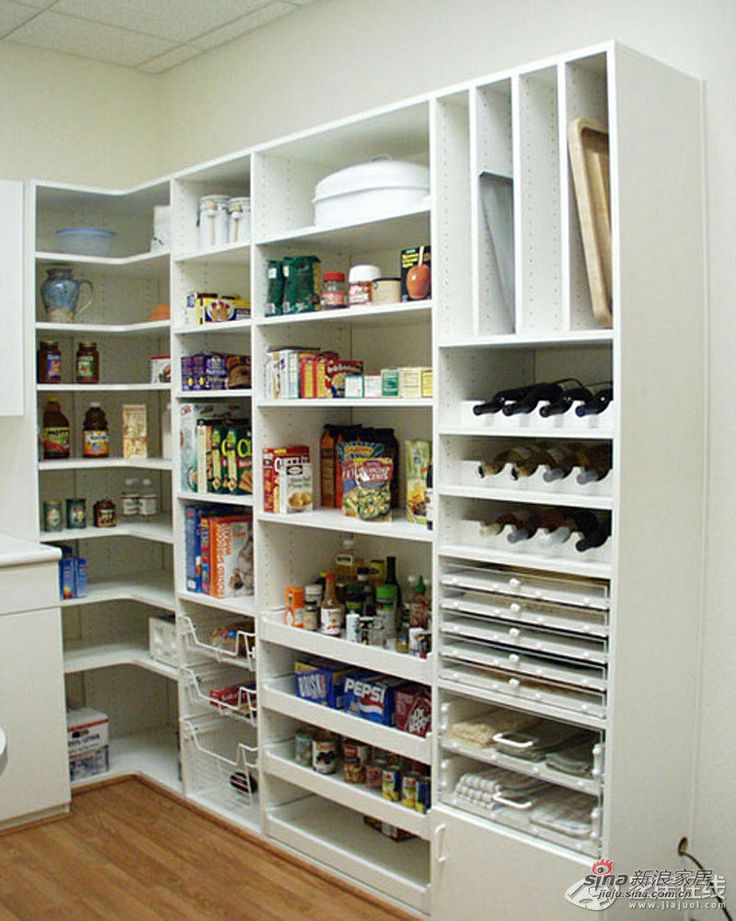 A design feature is a "bright" coloring, for more comfortable work in poorly lit rooms. Racks are made of high-strength steel 2.5 mm thick, powder-coated in RAL 5015 color. Cross braces have a special C-shaped profile. The metal thickness of the ties is 1.5 mm, painted in RAL 2004 color. As the flooring on the shelves, plywood flooring 10 mm thick is used. Thanks to the perforation of the racks with a pitch of 45 mm, the installation of shelves can be carried out at almost any height.
A design feature is a "bright" coloring, for more comfortable work in poorly lit rooms. Racks are made of high-strength steel 2.5 mm thick, powder-coated in RAL 5015 color. Cross braces have a special C-shaped profile. The metal thickness of the ties is 1.5 mm, painted in RAL 2004 color. As the flooring on the shelves, plywood flooring 10 mm thick is used. Thanks to the perforation of the racks with a pitch of 45 mm, the installation of shelves can be carried out at almost any height.
This design allows it to be used for vertical storage of tires. In this case, plywood flooring is not used.
| MK series dimensions, mm | ||
| Height | Length | Depth |
| 2000; 2500; 3000 | 455; 500; 655; 770; 1015; 1265; 1540; 1845* | 455; 500; 655; 770; 1015; 1265; 1540; 1845* |
* - shelves 1845x1845 mm are not available
MKF shelving (up to 300 kg per shelf)
Analogue of the MK series.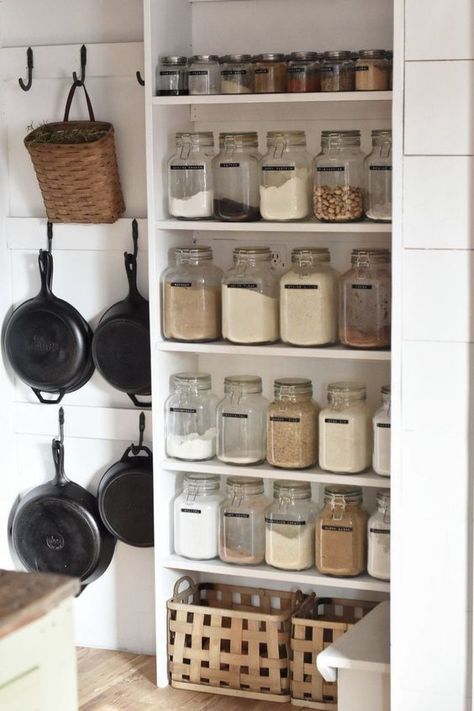 Lightweight design and colors are the main difference. The racks of this model are powder coated according to RAL 5015, while the ties are light gray (RAL 7035). As well as MK models, MKF are completed with plywood flooring 10 mm thick. There are some differences in the overall dimensions of the structure. The load on the shelf of this model is 300kg, the load on the section should not exceed 2100kg. Racks are perforated every 50 mm.
Lightweight design and colors are the main difference. The racks of this model are powder coated according to RAL 5015, while the ties are light gray (RAL 7035). As well as MK models, MKF are completed with plywood flooring 10 mm thick. There are some differences in the overall dimensions of the structure. The load on the shelf of this model is 300kg, the load on the section should not exceed 2100kg. Racks are perforated every 50 mm.
At the request of the customer, the MK and MKF models can be equipped with sanded plywood flooring. This allows them to be used for storing fabric materials. Large overall dimensions (width , rack depth ) allow using these models for storing rolled materials.
| MKF series dimensions, mm | ||
| Height | Length | Depth |
| 2000; 2500; 3000 | 500; 610; 910; 1525;1830* | 500; 610; 910; 1525; 1830* |
Medium-duty racks SGR (up to 500 kg per shelf)
Medium-duty shelving racks of the SGR series. Racks are galvanized steel, beams are painted with red paint. Thanks to the perforation of the racks along the entire length, it is possible to install shelves at any height. The beams are attached to the racks with hooks, which makes it easy to move the shelves to the desired height if necessary. Thanks to the installed latch, there is no possibility of the hook falling out. It is possible to use various materials (metal, plywood, chipboard) as flooring on the shelves.
Racks are galvanized steel, beams are painted with red paint. Thanks to the perforation of the racks along the entire length, it is possible to install shelves at any height. The beams are attached to the racks with hooks, which makes it easy to move the shelves to the desired height if necessary. Thanks to the installed latch, there is no possibility of the hook falling out. It is possible to use various materials (metal, plywood, chipboard) as flooring on the shelves.
This model is designed to be fixed to the floor with anchor bolts. In case of uneven floors in the warehouse, leveling plates are additionally used to ensure proper racking.
| SGR series dimensions, mm | ||
| Height | Length | Depth |
| 2000; 2500; 3000; 3500; 4000 | 1200; 1500; 1800; 2100; 2400 | 400; 500; 600; 800; 1000 |
Pallet racks
Designed for pallets.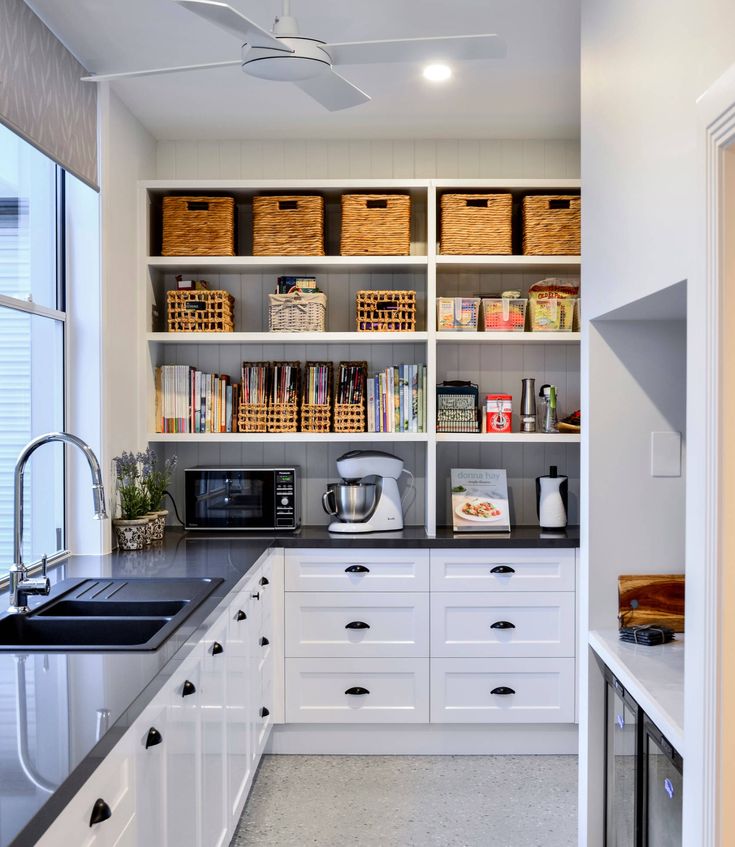 It is the dimensions of the pallet that determine the size of the desired design. Also often these racks are used as mezzanine structures, models for rolls, etc.
It is the dimensions of the pallet that determine the size of the desired design. Also often these racks are used as mezzanine structures, models for rolls, etc.
For standard pallets (800x1200mm) the following section lengths are used: 1800, 2700, 3600 mm. Under 2, 3 and 4 pallets respectively. For Finnish pallets (1000x1200mm), sections 2200 and 3300 mm long are used. Shelf depth varies from 1000 to 1100 mm.
| Typical dimensions of pallet racks, mm | ||
| Height | Length | Depth |
| 1500 to 12000 in 100 mm increments | 1200 to 4000 | 600 to 1800 |
0230, contact us in the most convenient way for you and our managers will definitely advise you. No time read?
We will send the material to you at:
By clicking on the button, you consent to the processing your personal data
Many apartments have a small room used as a storage room. This is especially convenient for housing with a minimum amount of square meters that the owner would not like to occupy for storage. Storerooms in the apartment allow you to place blanks and utensils, small household appliances, sports equipment, car tires, seasonal clothes, sleds, skis and much more inside. Every year, the list of things that are used quite rarely, but needed in the household, only increases.
Content of Article
- The main advantages of the racks in pantries
- Rules for determining sizes
- Calculation of load
- Tips of specialists
- How to make racks in the pantry of tools
- Assembly ?
- Sequence of work
- Do-it-yourself hanging rack in the closet
- Metal storage shelving
- Assembly sequence
- What is the difference between metal shelving?
- Conclusion
Loading ...
Pantry room shelving will help avoid chaos, transform the dressing room, make it comfortable to use vegetable storage - no matter how the pantry is used, it must be kept in order. You can choose any method of acquiring a structure - order finished products from an organization or make a metal or wooden frame.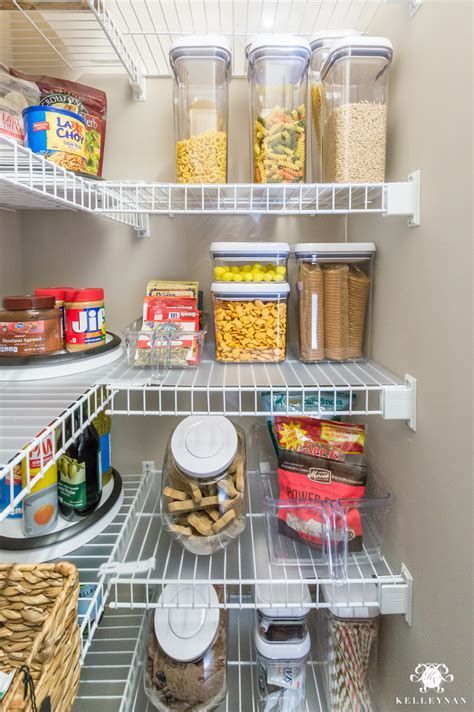 Assembly is done on site, especially with built-in shelves.
Assembly is done on site, especially with built-in shelves.
The main advantages of shelving in pantries
A built-in closet in a pantry / dressing room has a lot of advantages. First of all, it is a saving of useful footage in the apartment. The space occupied by things can be used for furniture or decor items. The arrangement of items on the shelves is always neat, and finding the right thing is not difficult.
If you know how to make whatnots in the pantry, you won't need to buy furniture, because it will not be difficult even for an inexperienced person to make the construction yourself. The most important advantage of the shelving compartment is the rational use of the pantry space. Hanging storage systems, cabinets instead of pantry, end shelves and many other devices allow you to make the most of this space.
Sizing rules
Storage shelving Photos and examples of finished projects in the interior can be found on many manufacturers' websites and catalogs. They organize the space, using it as efficiently as possible. If they are placed in the dressing room, then the presence of many shelves allows you to neatly store boxes and stacks of linen, hangers with clothes, shoes and small accessories.
They organize the space, using it as efficiently as possible. If they are placed in the dressing room, then the presence of many shelves allows you to neatly store boxes and stacks of linen, hangers with clothes, shoes and small accessories.
To make a wardrobe rack with your own hands, you do not need experience in similar work, special tools or invited experts. A properly drawn up project is the key to a successful pantry, which can be used as a toy pantry, dressing room, utility closet and vegetable warehouse.
In the pantry choose inexpensive racks, collapsible type or solid wood. Shelf width varies depending on the width of the room and purpose. The closet in the pantry photo can be corner or central, although in a small apartment they rarely make a passage near the wall. In the wardrobe in the middle they put a mirror with a pouffe, in which the owner can change clothes.
When drawing up a project and determining the area, all hinged shelves, a storage rack, a chest of drawers and other storage systems are marked on the diagram. To calculate the size of a shelf for a bookcase, you need to know how it will be used:
To calculate the size of a shelf for a bookcase, you need to know how it will be used:
- when storing blanks, the shelves in the structure must be wide, and the frame must be reinforced. This will help to avoid breakage with a large conservation weight;
- Placement of accessories, books or small items allows you to create shelves with a glass surface that do not require reinforcement. Interesting ways to organize things can be found in multiple photos on the web;
- wardrobe shelves are best made of wood, which is treated with special solutions against moisture;
- a pantry with household supplies and household chemicals needs a metal frame and protection of the finish from smudges and dirt.
Load Calculation
Before starting production, the load from the objects and things to be stored is calculated. This indicator depends on the following factors:
- wood shelf thickness - from 30 to 55 mm. The greater the expected load, the thicker the board should be;
- fastening method - wood bars a few cm, metal brackets.
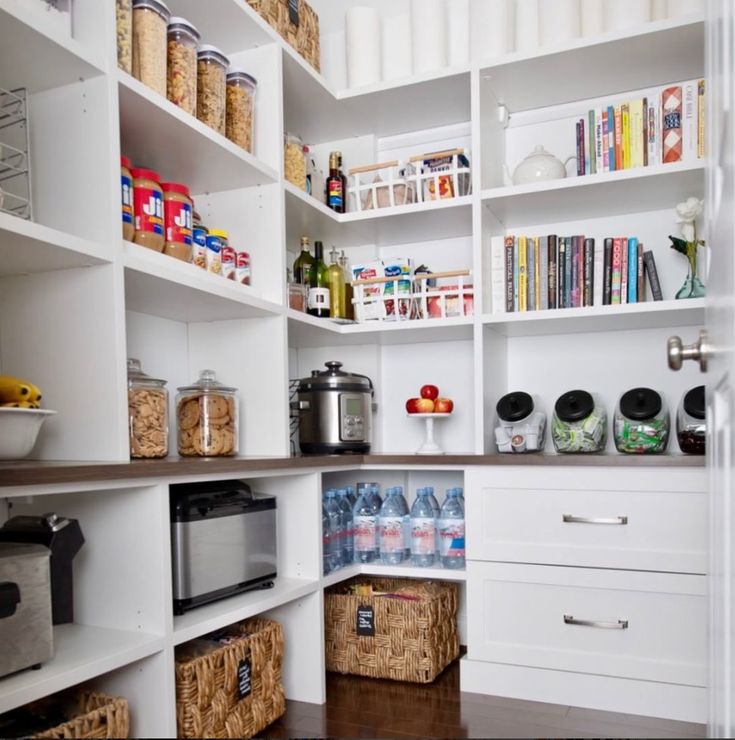 Plastic holders will not cope with the weight of the shelf;
Plastic holders will not cope with the weight of the shelf; - fastening points - the longer the built-in shelving unit, the more fasteners are used.
Expert tips
Experts provide a number of tips to avoid errors in manufacturing and installation. A rack for a pantry or dressing room is made by hand no worse than in production, if the rules are met:
- the purpose of the structure is determined. The diagram reflects all large-sized things that require shelves with sufficient width and depth;
- varnishing and staining of all wood elements. On the Internet you can find many photos with examples of such work;
- optimal placement of the structure on three walls or U-shaped;
- natural materials, solid wood preferred. The manufacture of partitions allows the use of veneer, plywood, chipboard or MDF.
How to make shelving in the pantry with your own hands
Before starting work, the place of the future structure is always prepared. Consider how to make shelving in the pantry with your own hands as quickly and efficiently as possible. First of all, you need to prepare the walls - they are checked for bumps, defects, chips and other problems. Identified shortcomings are eliminated with plaster. When decorating, it is better to choose paints of light colors, which allows you to visually enlarge the room and remove gloomy tones. It is not recommended to make an expensive finish in the dressing room, since this is an auxiliary type room.
Consider how to make shelving in the pantry with your own hands as quickly and efficiently as possible. First of all, you need to prepare the walls - they are checked for bumps, defects, chips and other problems. Identified shortcomings are eliminated with plaster. When decorating, it is better to choose paints of light colors, which allows you to visually enlarge the room and remove gloomy tones. It is not recommended to make an expensive finish in the dressing room, since this is an auxiliary type room.
Preparing tools
The following tools must be assembled and put into service:
- suitable boards, finished to the correct thickness and width;
- screwdriver;
- electric drill;
- screws and self-tapping screws for fasteners;
- brackets and other holders;
- marking of fixation points - tape measure, pencil, pen, marker;
- level used for building work.
Once the instrumentation is assembled, markings are made with a pencil. With the help of a level, the evenness of all marks is checked, since for a rack in a dressing room, each cm is critical in terms of structural reliability. When making a closet in the pantry with your own hands, it is important to prevent the passage from being blocked.
With the help of a level, the evenness of all marks is checked, since for a rack in a dressing room, each cm is critical in terms of structural reliability. When making a closet in the pantry with your own hands, it is important to prevent the passage from being blocked.
Shelving assembly
Storage shelving in the pantry is assembled in the following sequence:
- the brackets are screwed into the wall. Fixation must be additionally checked by the building level. It is recommended to use only metal fasteners;
- the boards are traversed with sandpaper or a grinder;
- the surface of each board is treated with varnish, stain can be used;
- Once the wood has dried, the shelf is placed on the bracket and fixed with a screw.
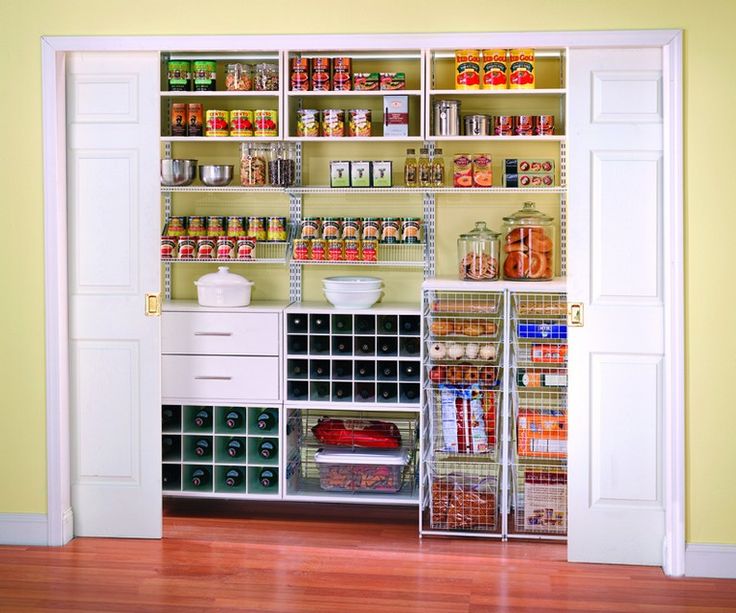 The distance between these blanks is from 0.5 cm, the depth is kept about 30 cm;
The distance between these blanks is from 0.5 cm, the depth is kept about 30 cm; - at the end of the work, the equipment is laid aside, dust and debris are removed. The design is ready to use.
How to make a rack from planed boards?
Work also begins with the preparation of the wall, the preparation of metal fasteners and boards with a thickness of 20 cm. The following tools are required:
- electric jigsaw;
- hammer drill with concrete drills;
- planer and sandpaper;
- screwdrivers and knife;
- tape measure, marking marker;
- PVA glue;
- self-tapping screw set.
The length of the board is determined for each case, based on the size of the pantry. It is also necessary to prepare wooden bars, 0.45 cm each, plywood with 8 mm in thickness. Processing of each detail with varnish and stain is strictly required!
Sequence of work
Before production, drawings are drawn up, on which the calculation of space for shelves is performed.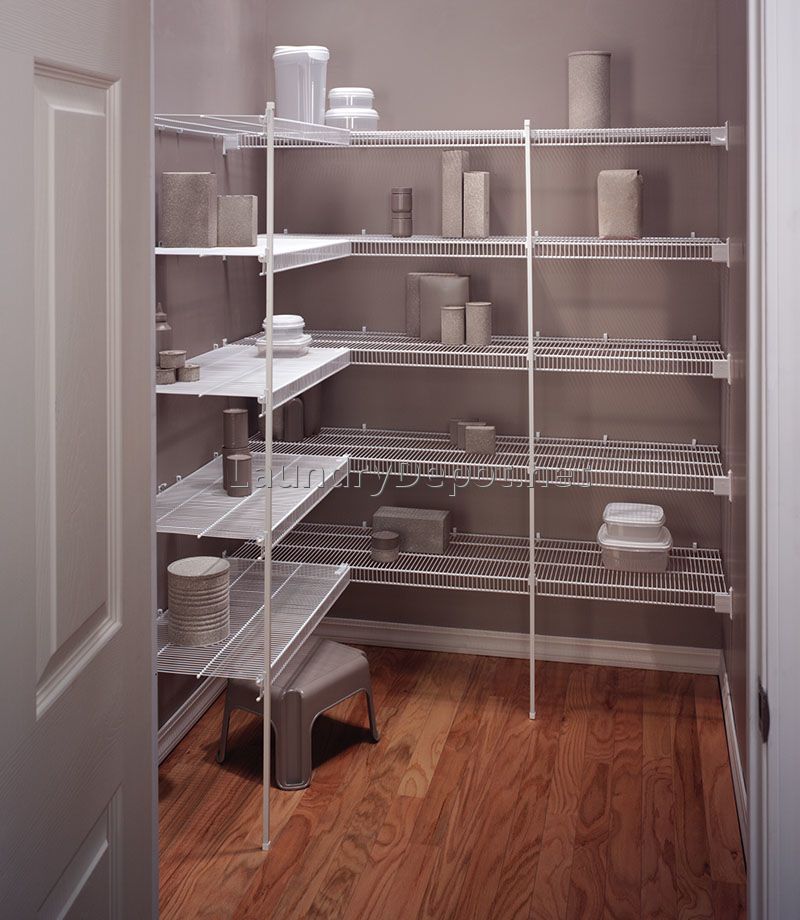 All markups are checked multiple times to avoid missing an error. After that, the manufacture consists in performing the following sequence of steps:
All markups are checked multiple times to avoid missing an error. After that, the manufacture consists in performing the following sequence of steps:
- The bars are fixed to the wall with self-tapping screws. This design will allow you to fasten the shelves together, so the frame of the product is formed;
- between the bars laid in the longitudinal direction, put the transverse. Each owner determines the height and distance individually, focusing on the design parameters;
- shelves are cut out in accordance with the dimensions of the frame, laid on transverse fasteners. Fixation is done into each other, the joints are treated with screws and glue;
- the first shelf must be solid, like the fourth (last). All inserts between them can be divided with plywood, which will allow you to equip the sections.
Shelves on each side can be a different number. It is worthwhile to calculate the storage options in advance in order to know the number of required sections.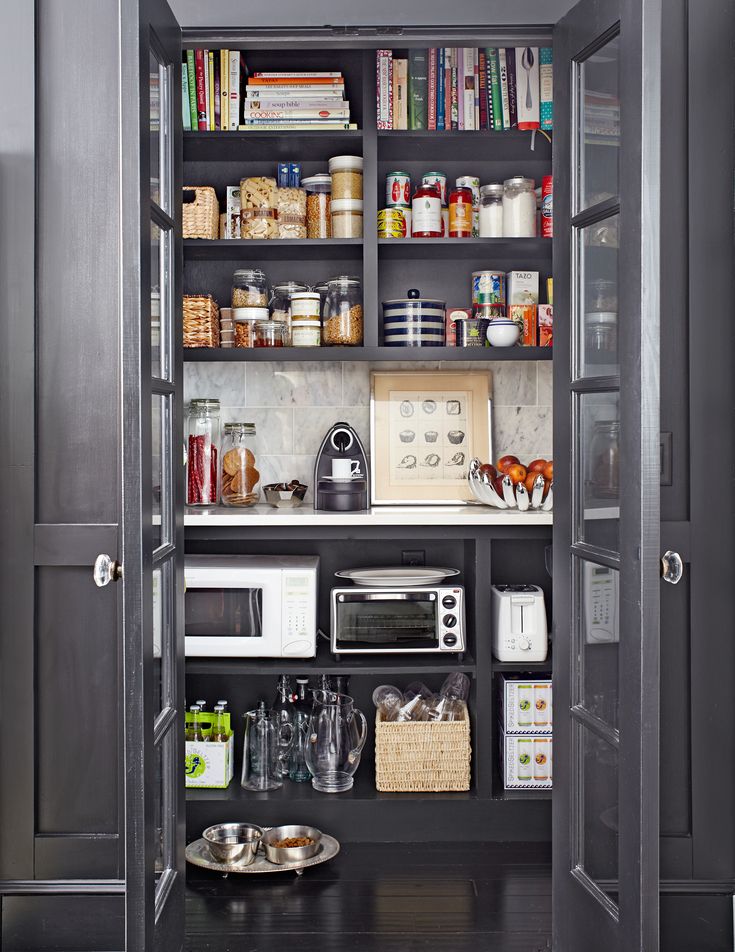
Do-it-yourself hanging shelving in the pantry
Hanging design saves space on the floor. This is especially important if you intend to place containers, baskets or shoe racks in the dressing room. To make a do-it-yourself rack in the pantry of a hinged type, you need the following tools:
- boards up to 20cm wide;
- screws for furniture work;
- drill or grinder;
- screwdriver and self-tapping screw set;
- tape measure, pencil, spirit level.
The assembly sequence of the canopy is as follows:
- the boards must be connected like a box. Self-tapping screws are inserted into the holes made by the drill;
- as soon as the box is assembled, furniture hooks made of metal are attached to its back surface, on which the structure will hang;
- the surface is stained, painted to match the intended decor, varnished;
- the structure is fixed to the wall.
Metal storage shelving
Metal shelving requires preparation of other tools.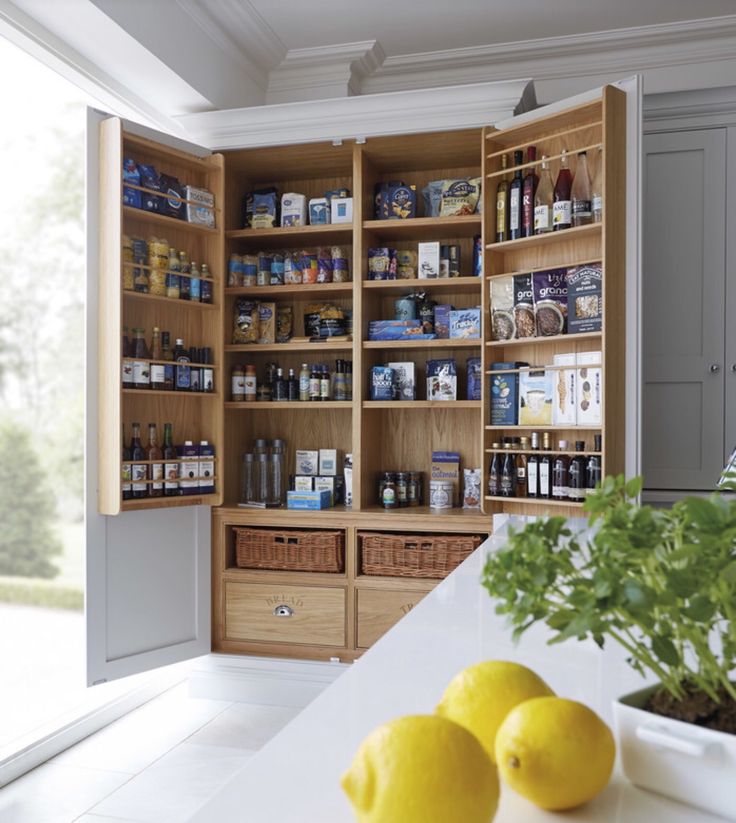 Working with metal is more difficult than with wood, but manufacturing and installation are quite simple. You need a grinder, a hacksaw for metal work, self-tapping screws, a tape measure. Materials - pieces of pipe up to 3 meters, diameter up to 2.5 cm. Shelves are made of plywood 15 mm thick.
Working with metal is more difficult than with wood, but manufacturing and installation are quite simple. You need a grinder, a hacksaw for metal work, self-tapping screws, a tape measure. Materials - pieces of pipe up to 3 meters, diameter up to 2.5 cm. Shelves are made of plywood 15 mm thick.
Ask a question to the author
Preparation consists in mandatory marking of pipes and cutting them into small pieces. For example, a rack of 1.5 m in length, 2 m in height and 45 cm in width requires two-meter racks in the amount of 4 pieces. In addition, segments (4 pieces) of 1.5 meters and 0.4 meters are needed. All calculations are carried out on paper, and the dimensions are indicated on the diagram.
Metal shelving unit
Assembly sequence
The metal shelving unit assembly sequence is as follows:
- the racks are placed on a flat surface;
- make the front and rear of the frame;
- fitter corners adjust corners;
- cut excess pipes;
- put the structure against the wall so that it does not tip over;
- The frame is assembled using connecting brackets.
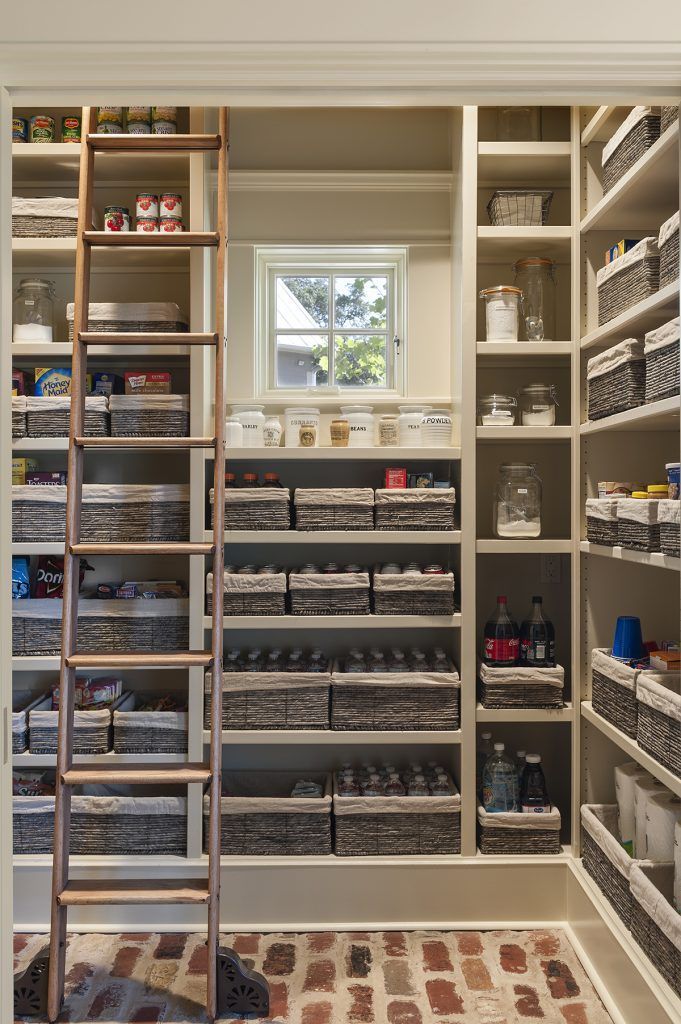 Outwardly, it is a simple rectangle;
Outwardly, it is a simple rectangle; - fixing the frame is carried out vertically with uprights;
- make shelves from plywood and wood, attaching joints with self-tapping screws. Mounting schemes can be additionally seen in the photo on the Internet.
What makes metal racks different?
Metal structures have a number of advantages:
- low cost;
- easy to repair - replacement parts are standard and can be made by hand;
- fire resistance;
- no deformation;
- long life;
- attractive appearance, especially after painting;
- the presence of treatment with galvanized solutions avoids corrosive processes.
Conclusion
A built-in wardrobe saves space and keeps things organized. To make such a design on their own is within the power of any homeowner. Experts insist on the preliminary creation of a project, which takes into account the material of manufacture, the required dimensions, wishes for the number of shelves and appearance, and the nuances of the configuration of the room.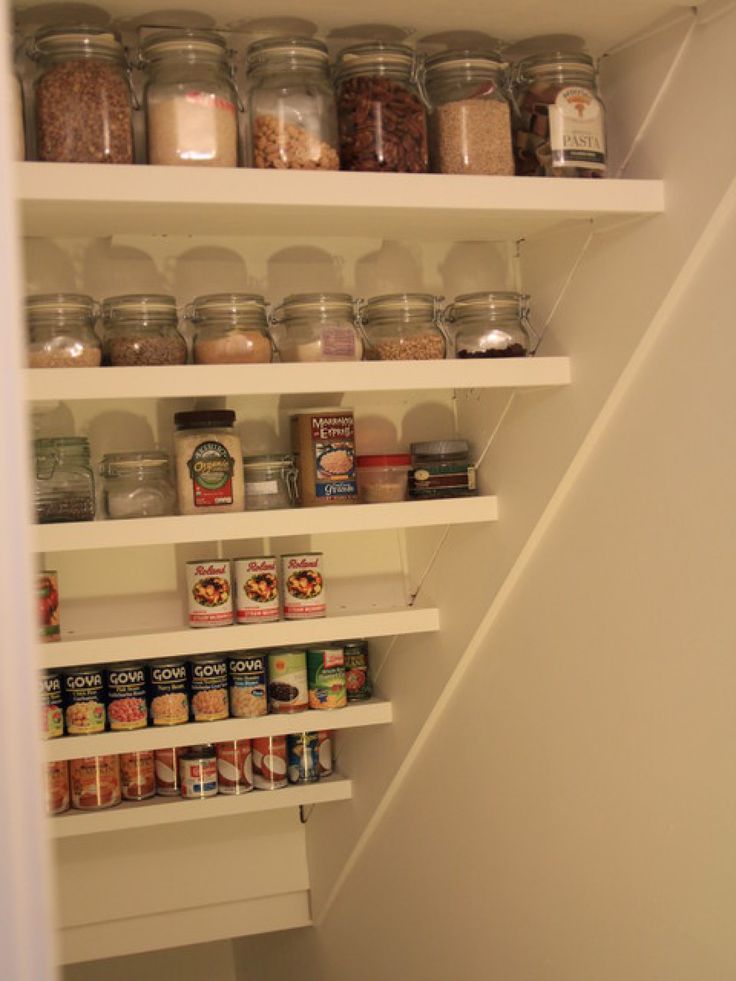
Learn more
- Home interiors 2023
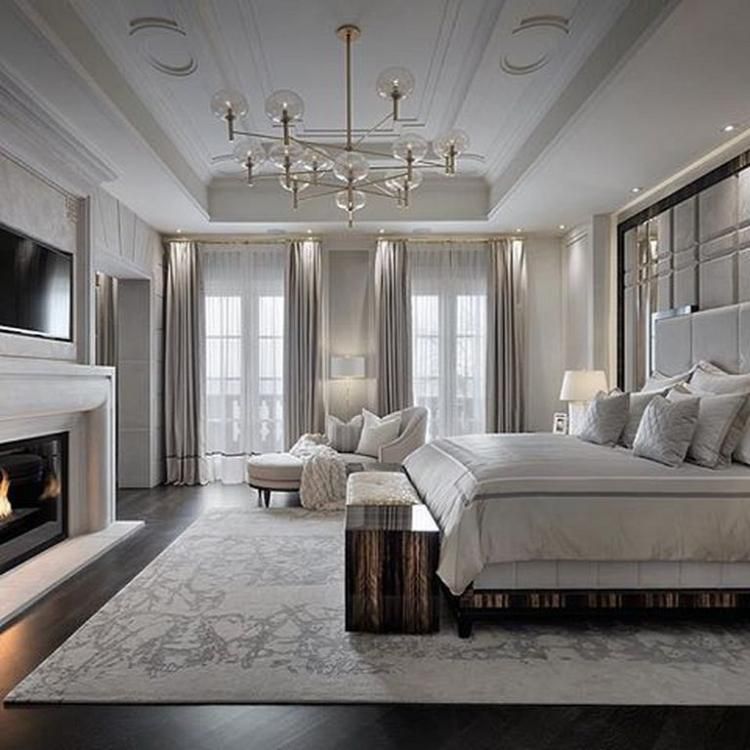
- Purple room designs
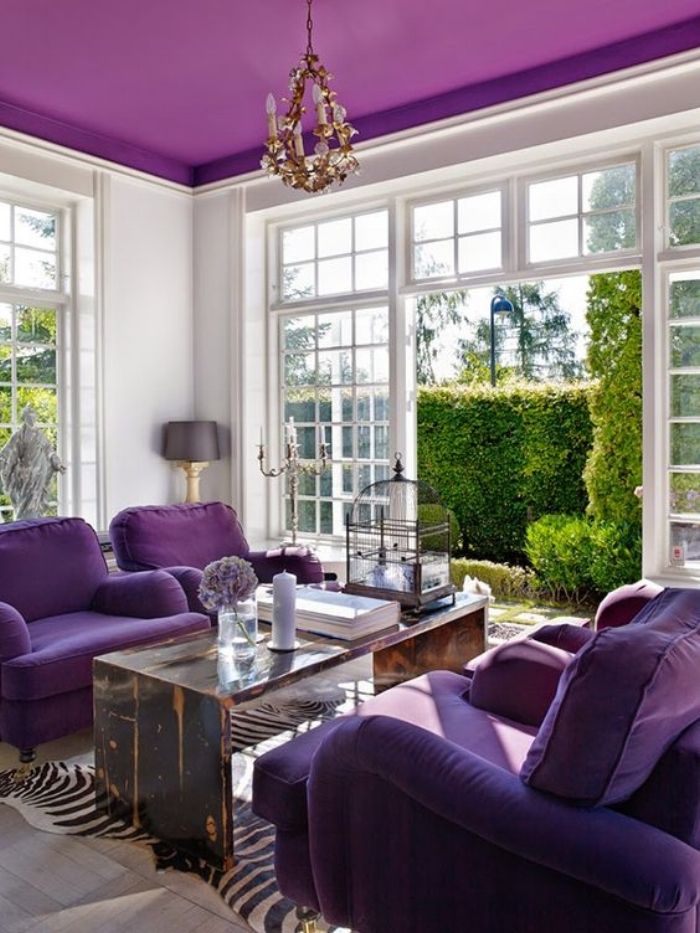
- Ideas for small back gardens

- Kings road home

- Traditional christmas tree decor
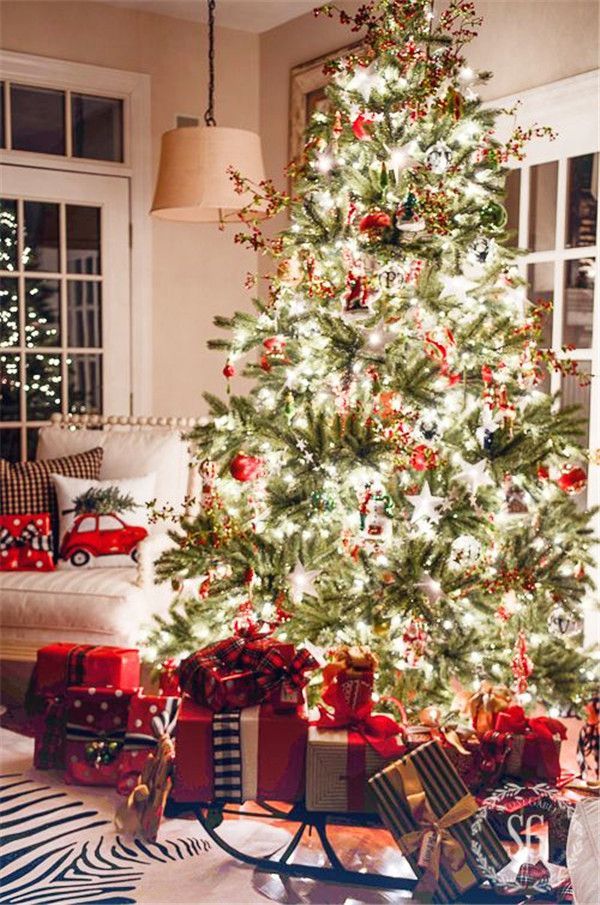
- How much should carpet cost installed

- Best foyer colors 2023

- Glass conservatory design
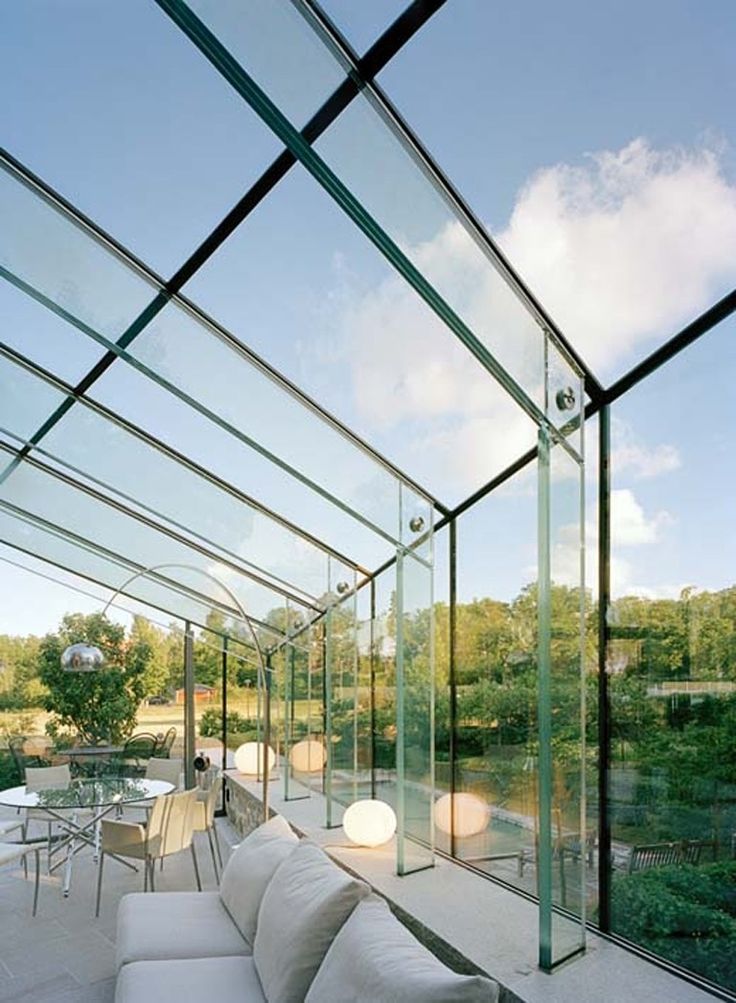
- How much to water tomato plant

- Growing flowers to cut
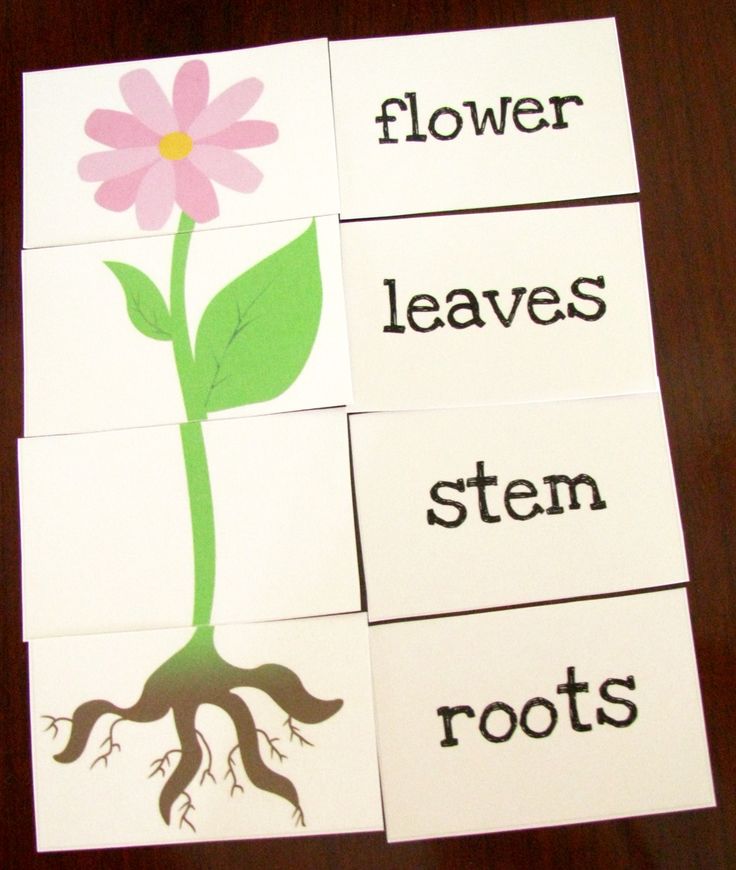
- House styles examples
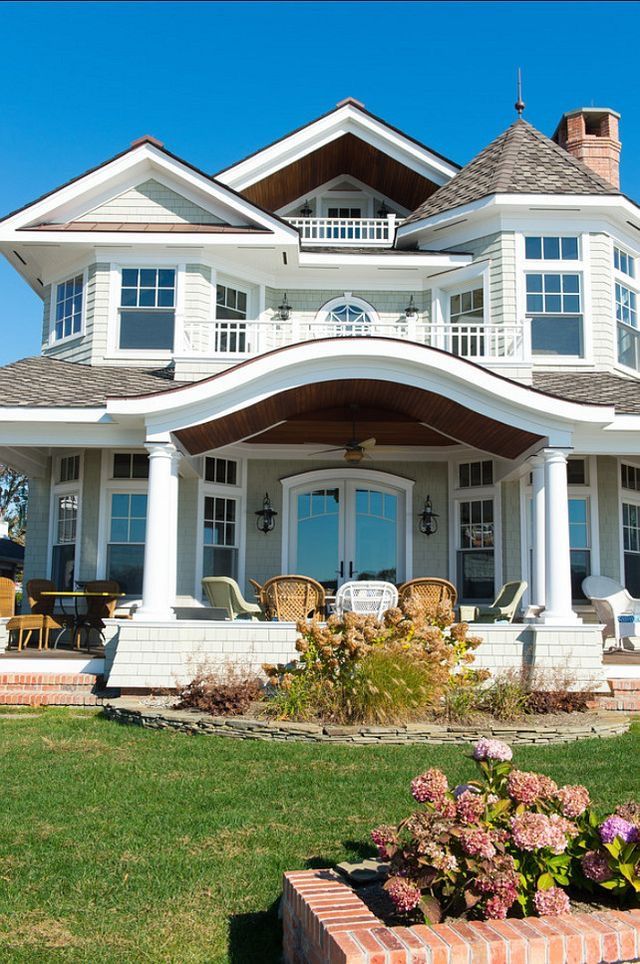
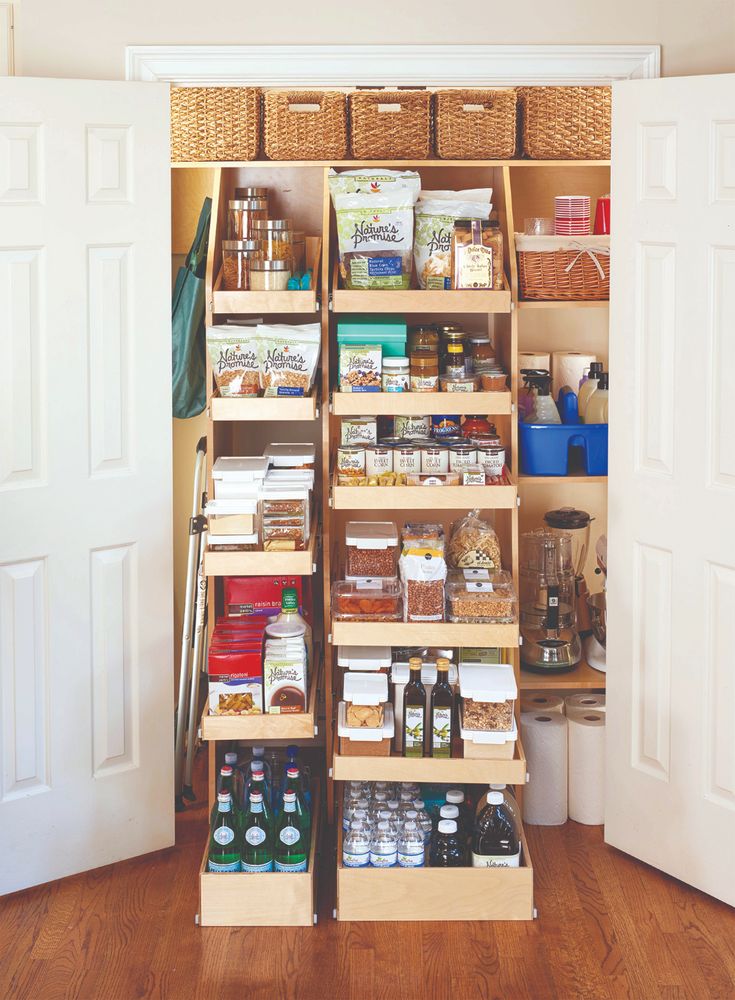
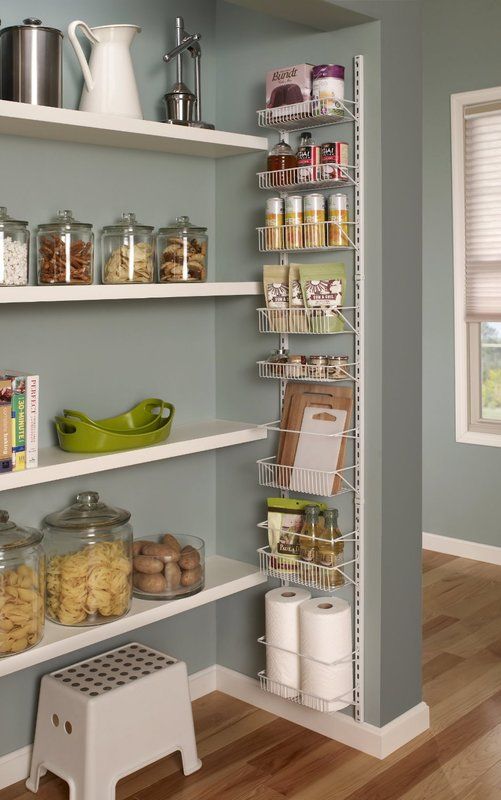 Ideal for flour and sugar storage. Wine bottles, oil jugs, bulk containers are 10"-12" tall. Bulky items.
Ideal for flour and sugar storage. Wine bottles, oil jugs, bulk containers are 10"-12" tall. Bulky items.